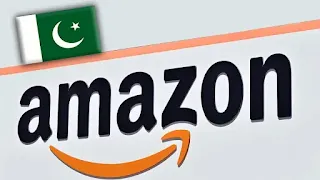Etsy is a treasure trove for creative entrepreneurs, offering a platform to showcase handmade, vintage, and unique products to millions of buyers worldwide. But here’s the reality: with over 7.5 million sellers, the competition is fierce. Simply listing your products isn’t enough to guarantee success. To truly thrive on Etsy, you need a powerful marketing strategy that sets you apart, drives traffic, and converts browsers into loyal customers. If you’re ready to unlock the full potential of your Etsy shop, this guide will show you how to dominate the marketplace with proven Etsy marketing strategies.
Why Etsy Marketing is Your Key to Success
Etsy is a bustling marketplace, but it’s also a platform where buyers actively seek unique, personalized, and high-quality products. The challenge? Standing out in a sea of sellers. Here’s why Etsy marketing is your secret weapon:
Boost Visibility: Etsy’s algorithm favors shops that drive their own traffic. By marketing your products, you improve your rankings in search results.
Attract the Right Buyers: Effective marketing ensures your products are seen by people who are genuinely interested in what you offer.
Build a Loyal Community: Marketing isn’t just about sales—it’s about creating connections with customers who will return and recommend your shop.
Maximize Your ROI: A well-executed marketing strategy ensures you’re investing your time and money in tactics that deliver real results.
The Ultimate Etsy Marketing Blueprint
Here’s your step-by-step guide to mastering Etsy marketing and growing your shop:
1. Master Etsy SEO
Etsy’s search engine is the primary way buyers discover products. To rank higher, you need to optimize your listings with relevant keywords. Here’s how:
Research Keywords: Use tools like Etsy’s search bar, eRank, or Marmalead to find high-traffic, low-competition keywords.
Craft Keyword-Rich Titles: Include your target keywords in your product titles. Be specific and descriptive.
Use All 13 Tags: Etsy allows you to add up to 13 tags per listing. Use them wisely to cover all relevant keywords.
Write Compelling Descriptions: Highlight the features, benefits, and unique selling points of your products. Use keywords naturally to improve discoverability.
Example: Instead of “Handmade Soap,” try “Lavender Oatmeal Handmade Soap – Natural, Vegan, and Moisturizing – Perfect for Sensitive Skin.”
2. Invest in High-Quality Visuals
Your product photos are your first impression. High-quality visuals can make or break a sale. Tips for stunning photos:
Use natural lighting to showcase your products.
Show multiple angles and close-ups to highlight details.
Include lifestyle shots that show your product in use.
Consider adding videos to demonstrate your product’s unique features or benefits.
3. Leverage Social Media
Social media is a powerful tool for driving traffic to your Etsy shop. Platforms like Instagram, Pinterest, and TikTok are particularly effective for visual products. Here’s how to make the most of them:
Share Behind-the-Scenes Content: Show your creative process, workspace, or packaging to connect with your audience.
Use Hashtags Strategically: Research and use relevant hashtags to increase discoverability.
Engage with Your Audience: Respond to comments, messages, and DMs to build relationships.
Collaborate with Influencers: Partner with micro-influencers in your niche to reach new audiences.
4. Run Etsy Ads
Etsy Ads are a built-in advertising tool that allows you to promote your listings directly on Etsy’s platform. To maximize your ROI:
Start with a small daily budget and scale up as you see results.
Focus on promoting your best-selling items with strong reviews and high-quality photos.
Regularly review your ad performance and adjust your strategy based on what’s working.
5. Build a Strong Brand Identity
Your brand is what sets you apart from competitors. Build a cohesive and memorable brand identity by:
Designing a professional logo and shop banner.
Using consistent colors, fonts, and tones across your listings and social media.
Sharing your story in your “About” section to connect with buyers on a personal level.
6. Offer Exceptional Customer Service
Happy customers are more likely to leave positive reviews, recommend your shop to others, and make repeat purchases. Go the extra mile by:
Responding to inquiries promptly and professionally.
Offering personalized touches, like handwritten thank-you notes or free samples.
Resolving any issues quickly and courteously.
Advanced Etsy Marketing Strategies
Seasonal Promotions: Take advantage of holidays and special occasions by offering limited-time discounts or bundles.
Email Marketing: Collect email addresses from your customers and send newsletters with updates, promotions, and exclusive offers.
Cross-Promotions: Partner with other Etsy sellers to promote each other’s products and reach new audiences.
Analyze Your Data: Use Etsy’s Shop Stats to track your performance and identify trends. Pay attention to which listings drive the most traffic and sales.
Real-Life Success Stories
Take inspiration from sellers who have mastered Etsy marketing. One seller of handmade candles used Pinterest to drive over 10,000 monthly views to her shop, resulting in a significant boost in sales. Another seller of personalized jewelry increased her revenue by 200% by optimizing her listings for SEO and running targeted Facebook Ads.
Conclusion: Your Path to Etsy Success
Etsy marketing is the key to turning your creative passion into a thriving online business. By optimizing your listings, leveraging social media, running Etsy Ads, and building a strong brand, you can attract more buyers, increase your sales, and achieve your entrepreneurial dreams.
The journey to Etsy success requires dedication, creativity, and a willingness to learn and adapt. But with the right strategies in place, your shop can stand out in the crowded marketplace and become a go-to destination for buyers seeking unique, handmade, and vintage treasures.






